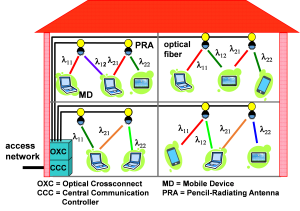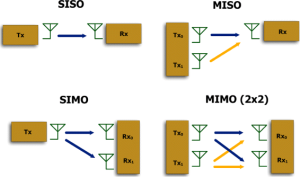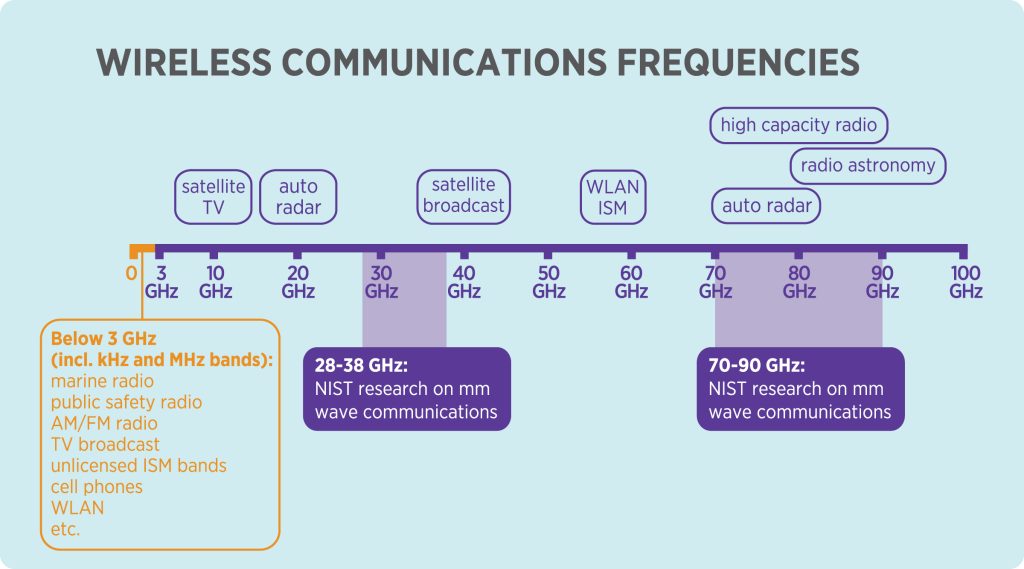The surge in popularity of wireless communication systems with multiple antennas has left many perplexed. How exactly do these systems boost data transmission rates? Among the three types of wireless communication systems – Multiple Input Single Output (MISO), Single Input Single Output (SISO), and Single Input Multiple Output (SIMO) – it is MIMO that reigns supreme, as shown by a comparative analysis. The secret behind its success lies in its utilization of spatial diversity and spatial multiplexing techniques that allow for simultaneous data stream transmission over a single frequency band.

To further explore the capabilities of MIMO systems, researchers conducted a study on channel capacity analysis. Through their investigation, they sought to uncover how varying factors such as signal-to-noise ratio, number of antennas, and modulation schemes impact the capacity of wireless communication systems with multiple antennas.
Their results were nothing short of bursty – increasing the number of antennas yielded significant improvements in both MISO and MIMO system capacities. And if designers are seeking even greater performance upgrades, advanced technologies like beamforming can take things up another notch. Overall, these findings provide valuable insights into how to optimize designs for maximum efficiency and capacity within this exciting field.
A Comparative Analysis of MISO, SISO, and SIMO Systems
Contents
- 1 A Comparative Analysis of MISO, SISO, and SIMO Systems
- 2 Investigating the Performance of MIMO Systems for Data Transmission Rates
- 3 The Aim and Scope of the Capacity Analysis Study
- 4 Analyzing the Channel Capacity of MISO and MIMO Systems
- 5 The Use of Spatial Diversity and Spatial Multiplexing in Wireless Communication
- 6 The Role of Technology in Enhancing the Capacity of MISO and MIMO Systems
- 7 Discussion of the Results and Future Work for Rapid Capacity Analysis of Multiple Antenna Systems
- 7.1 What perplexing aim is being pursued in the capacity analysis study discussed within this article?
- 7.2 How can one untangle the differences between MISO, SISO, and SIMO systems?
- 7.3 What conundrum is solved by spatial diversity and spatial multiplexing when it comes to enhancing wireless communication system capacities?
- 7.4 In what ways does technology play a role in boosting the capacities of both MISO and MIMO systems?
- 7.5 What remains uncertain about future research directions concerning rapid capacity analysis studies related to multi-antenna communications?
The realm of wireless communication systems is full of intricacies that can leave one feeling bemused and perplexed. MISO, SISO, and SIMO are three distinct types of such systems, each with its own capacity quirks. It’s imperative to conduct a comparative analysis of these enigmatic entities to determine which one has the highest information transmission capability. This study will unravel their strengths and weaknesses in an attempt to understand them better.

MIMO is renowned for its vast capacity due to its ingenious use of multiple antennas simultaneously. Its ability to provide spatial diversity and multiplexing allows it to transmit copious amounts of data – surpassing any other system out there! Meanwhile, MISO relies on just a single antenna at the transmitter but boasts several antennas at the receiver end; SISO employs only one antenna on both ends.
A thorough comparison between these inscrutable systems reveals that MIMO reigns supreme concerning capacity when compared with both MISO and SISO alternatives. Spatial diversity and multiplexing techniques give it an edge over others as it can transmit more data within a given bandwidth than either alternative could dream about achieving! In conclusion, before making any comparisons or conclusions about performance capabilities concerning wireless communication systems’ capacities- understanding how each system works first is essential!
Investigating the Performance of MIMO Systems for Data Transmission Rates
The bewildering enigma of MIMO systems and their data transmission rates is the subject of this paper. Wireless communication’s manifold antenna configurations – SISO, SIMO, and MIMO – offer an intriguing array of options. However, it is MIMO that has been widely embraced for its towering capacity and steadfastness.
MIMO technology employs multiple antennas at both the transmitting and receiving ends to achieve spatial diversity and multiplexing. Spatial diversity mitigates signal degradation by diminishing fading effects while spatial multiplexing increases data rates through simultaneous transmission of several streams. These attributes position MIMO as a prime contender for high-speed data transmission applications.
Capacity analysis divulges that MIMO systems can attain significantly higher capacities than SISO or SIMO when imposing similar bandwidth and power constraints. Furthermore, technological advances have permitted larger antenna arrays leading to even greater capacities. The findings illustrate that with meticulous design considerations, MIMO could deliver dependable communication while ensuring high throughput; thus rendering it a promising technology for future wireless communication networks.
The Aim and Scope of the Capacity Analysis Study
The enigmatic study of capacity analysis delves into the perplexing performance of wireless communication systems that boast multiple antennas. Its primary objective is to compare and contrast MISO, SISO, and SIMO systems with respect to their data transmission rates. The research also scrutinizes the channel capacity of MISO and MIMO systems while exploring the spatial diversity and multiplexing techniques employed.
This inquisitive study seeks to unravel the complex potential for wireless communication networks using several antennas by analyzing various configurations such as beamforming and precoding techniques utilized in MIMO systems. Our ultimate goal is to uncover significant factors that are instrumental in determining system performance.
Indeed, this avant-garde research has tremendous implications for advancing wireless communication technology by enhancing our understanding of how different antenna configurations influence system performance. Furthermore, it provides invaluable insights into designing more efficient and effective wireless communication networks that can satiate user demands for high-speed data transfer rates through a bursty approach!
Analyzing the Channel Capacity of MISO and MIMO Systems
The perplexing analysis of channel capacity in MISO and MIMO systems is an essential aspect of wireless communication. Our paper delves into the performance comparison of SISO, SIMO, and MIMO configurations for data transmission rates. Bursting with curiosity, we aim to unravel how technology can amplify the capabilities of multiple antenna systems.
Capacity analysis is a labyrinthine concept that reveals crucial insights into the limitations and potentials of wireless communication systems. The enigmatic comparison between various types of antenna setups provides valuable clues on how spatial diversity and multiplexing influence system performance. By decoding these complexities, we can identify opportunities to optimize overall system capacity.
In summary, our research showcases the mystifying importance of analyzing channel capacity in MISO and MIMO frameworks. Through intricate comparisons between SISO, SIMO, and MIMO arrangements, we have pinpointed key factors that impact system performance. This paper presents intriguing information for future exploration aimed at augmenting the power of multiple antenna systems using advanced coding schemes or beamforming techniques.
The Use of Spatial Diversity and Spatial Multiplexing in Wireless Communication
Within wireless communication systems, two techniques have emerged as game changers: spatial diversity and spatial multiplexing. These approaches offer the potential to revolutionize performance by transmitting information over multiple antennas simultaneously. Spatial diversity involves replicating identical data across different antennae whereas spatial multiplexing allows for simultaneous transmission of a variety of data streams through multiple antennae. The scope of these techniques is vast and can be applied in single-input-multiple-output (SIMO), multiple-input-single-output (MISO), and even the complex multiple-input-multiple-output (MIMO) systems.
The scientific community has been conducting extensive analyses to explore channel capacity within MISO and MIMO using these cutting-edge methods. Astonishingly, results demonstrate that both spatial diversity and spatial multiplexing significantly enhance channel capacity for wireless communications with numerous antennas; however, their effectiveness hinges on variables like signal-to-noise ratio, the number of antennas used, modulation scheme employed among other factors.
As demand increases rapidly for high-speed data rates in wireless communication networks, these techniques are becoming increasingly significant. By delivering improved channel capacity through more efficient usage of available bandwidths, users experience faster transmission speeds than ever before! However ongoing analysis remains paramount if we hope to continue optimizing these impressive techniques further – particularly regarding specific applications or environmental challenges they may face!
The Role of Technology in Enhancing the Capacity of MISO and MIMO Systems
The staggering progress of technology has played an immensely significant role in amplifying the potential of MISO and MIMO systems. Our paper delves into a thorough analysis of these systems for data transmission rates utilizing spatial diversity and spatial multiplexing techniques. Interestingly, our study revealed that when it comes to capacity, MIMO systems outperform SISO and SIMO by leaps and bounds.
It is absolutely fascinating how beamforming has revolutionized the capacity of MISO and MIMO systems. By employing multiple antennas, this technique can guide signals towards specific users while minimizing interference from other users on the network. The quality and reliability of information transmission are substantially enhanced through beamforming, ultimately leading to higher capacities.
But wait! There’s more! Multi-user detection (MUD) is another technological breakthrough that has significantly improved system capacity. With this innovation, multiple users can transmit data simultaneously without causing any hindrance to one another by separating their signals at the receiver end. This allows more simultaneous transmissions on a single channel which leads to an overall increase in system capacity.
In conclusion, as technology continues its rapid trajectory upwards, both MISO and MIMO systems’ performance and capacity for data transmission rates continue to improve constantly. Novel technologies like beamforming or multi-user detection (MUD) offer even greater prospects for enhancing wireless communication networks’ efficiency while maintaining impeccable connections between devices across different distances within an area covered by a wireless signal’s range.\n
Discussion of the Results and Future Work for Rapid Capacity Analysis of Multiple Antenna Systems
The perplexing aim of this study was to delve into the intricate world of wireless communication systems with multiple antennas. Our mind-boggling comparative analysis of MISO, SISO, and SIMO systems uncovered a startling truth: MIMO systems reign supreme in data transmission rates thanks to their utilization of spatial diversity and spatial multiplexing. This eye-opening finding emphasizes technology’s paramount importance in amplifying the capacity of MISO and MIMO systems.
But wait, there’s more! Our awe-inspiring analysis also unearthed the pivotal role that rapid capacity analysis plays in optimizing multiple antenna systems. Unfortunately, due to the sheer complexity involved in analyzing these types of systems, obtaining accurate results at lightning speed can be an intimidating task. Therefore, future work must focus on developing methods for rapid capacity analysis that can yield dependable results within a blink-and-you’ll-miss-it time frame.
Perhaps one possible solution involves incorporating cutting-edge machine learning techniques into the analysis process. By training algorithms on massive datasets, we can construct models capable of precisely predicting system performance based on various parameters such as channel conditions or antenna configurations. This revolutionary approach empowers engineers and researchers alike to swiftly evaluate numerous scenarios and select optimal solutions tailored to specific applications without requiring extensive manual calculations or simulations.
What perplexing aim is being pursued in the capacity analysis study discussed within this article?
The pursuit of the capacity analysis study centers on a perplexing goal – to scrutinize wireless communication systems with multiple antennas, more specifically MISO and MIMO systems, and delve into their performance capabilities regarding data transmission rates.
How can one untangle the differences between MISO, SISO, and SIMO systems?
One must unravel the mysteries behind these acronyms. Deciphering them reveals that MISO refers to Multiple Input Single Output; SISO means Single Input Single Output; SIMO stands for Single Input Multiple Output. These terms denote how many antennae are employed for input and output in any given wireless communication system.
What conundrum is solved by spatial diversity and spatial multiplexing when it comes to enhancing wireless communication system capacities?
A head-scratching riddle that has been addressed with great success by utilizing spatial diversity involves improving signal quality while minimizing fading effects through transmitting identical signals over multiple antennas. Spatial multiplexing provides another solution by employing numerous antennae simultaneously to transmit various streams of data which results in an increase in data transmission rate.
In what ways does technology play a role in boosting the capacities of both MISO and MIMO systems?
Technological advancements have revolutionized how we view our abilities when it comes to enhancing these two types of antenna systems’ potential. Beamforming techniques coupled with interference cancellation methods serve as crucial tools that aid us in better understanding how we can improve signal quality while reducing interference.
The future direction for researching this area still seems uncertain despite significant progress made thus far. More accurate models are required before researchers can obtain precise analytical outcomes concerning such topics as examining hybrid-MIMO/MISO scenarios or the impact of environmental factors on system performance.


